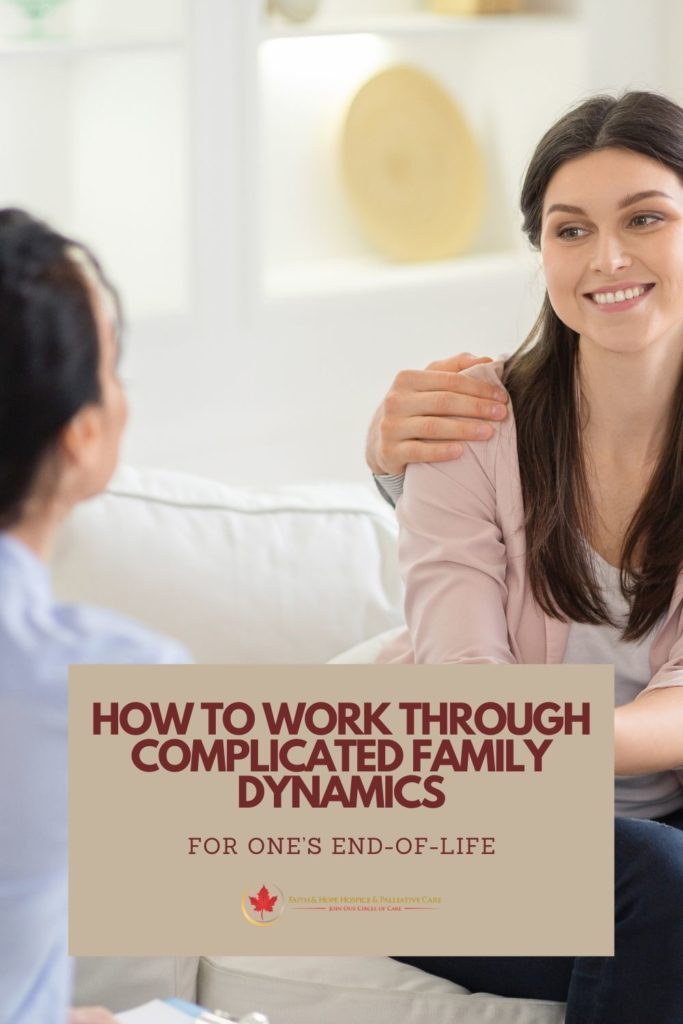
- By: administrator
- Blog
- No Comments
Family relationships can be tough, even under normal circumstances. So, when a family member becomes terminally ill, this can introduce a whole new source of stress and anxiety. Hospice providers in Los Angeles CA have seen tensions rise between family members when there is over-involvement or under-involvement in the process. It can be difficult to strike that balance in a time when emotions are high. However, it is important to remember that, despite the challenges, family members can still create positive memories with their loved ones as they face their end of life.

Palliative care workers in Los Angeles observe that everyone reacts differently in times of crisis. Some people feel the need to plan and organize, in order to control the situation. Others feel overwhelmed by any logistics and simply want to give and receive affection. While everyone may have good intentions, there will be times when unmanaged expectations and emotional sensitivity can get the best of them. In order to mitigate hardships and ease the journey of your loved one, it is important to know what’s coming. Here are some of the best strategies for navigating family dynamics, according to hospice care experts in Los Angeles:
Planning
Death is unpredictable, but inevitable for all of us. For those with dwindling health conditions, the threat of death is even more apparent. Most people believe that loved ones should communicate about their end-of-life wishes and goals. However, the cultural taboo on this subject has caused many to be silent. Only twenty-seven percent of people actually communicate to family members about their last days.
Talking about death doesn’t mean that you are willing it to happen sooner. In fact, many people feel relieved to talk about it and plan the logistics, so that everyone is more prepared to handle it whenever it happens. You cannot plan for every aspect of someone’s end-of-life, but you can put certain measures in place (like a medical power of attorney) in order to ensure that the process happens according to their preferences.
Hospice patients in Los Angeles CA are also encouraged to create an advance directive, which is simply a written statement that addresses end-of-life health care decisions. Some patients would prefer to receive whatever treatment is available while others would forgo this demanding schedule for comfort. When planning for a loved one’s end of life, it is important to understand their values. What is a “good death” for them? What will bring them peace and comfort?
Family members that hold caregiving responsibilities can especially benefit from an end-of-life plan. This can help break up the burden of action amongst the loved ones. One person may be in charge of hands-on care while another may be in charge of finances, living arrangements, or funeral planning. Once everyone has agreed to their assigned roles, they will have an easier time working with one another when the loved one has passed.
Communicating
Communication is key in a lot of areas of life. When it comes to end-of-life care, family members may have different ideas about what is appropriate for their loved ones. Contradicting perspectives may cause issues between family members, and may drown out the actual preferences of the person facing their end of life. In order to avoid these arguments, it is important that the focus remains on the loved one. Good communication includes active listening, respect, and empathy.
Communicating can also help resolve long-standing issues that family members have dealt with for longer than their loved one has been ill. As a person’s health declines, it becomes more important than ever to broach the topics that were once avoided. Clear, honest communication negates previous regrets and grudges, thus freeing up family members to fully contribute their love and support during a difficult time.
When everyone is on the same page, this allows family members to remember what is important. Everyone may have something to say about the situation, but what matters is that the person facing their end-of-life is getting the care they need. For many families, it works to have a more limited circle of people in the day-to-day network that can reach out and update others in the family for more significant news. Communication ensures that everyone feels good about their involvement, knowing that it’s what their loved one wants and needs.
Advocating
When the time comes for a loved one’s passing, it is important to keep returning to their end-of-life wishes. As a family member, you can help by reminding everyone else what plans are set in place and why. Advocating for your loved one, during a time of sudden grief, can help rebalance the situation.
By keeping your loved one’s wishes at the center of everything, you will have an easier time making decisions in each step of the process. Some family members may disagree with the way things are being handled but, as long as these choices are following your loved one’s preferences, there is no room for debate. Family members can agree to disagree.
Seeking Assistance
It can be difficult to watch a loved one near their end of life. Many people feel a sense of panic or helplessness, even when they have managed their expectations. During a difficult time like this, it is important to know when to ask for help. There are many licensed professionals who have been trained to help families go through this process. Hospice social workers can help ease emotional burdens and provide resources to those who need a little extra care.
There is a lot of planning that goes into end-of-life care, but you shouldn’t expect to have everything sorted out. When you open yourself up to assistance, you allow yourself to be human.
If you or a loved one is in need of end-of-life care, contact Faith & Hope Hospice & Palliative Care at (877) 971-1860. We are a member of the National Hospice and Palliative Care Organization and are accredited by The Joint Commission to provide home-based hospice and palliative care services within Los Angeles County and surrounding areas.
